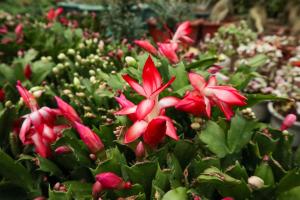How to Care for Jasmine Plants in Pots Indoors
Indoor jasmine plants can add a touch of fresh and soothing aroma to your home, and they are relatively easy to care for in pots. With the right conditions and some attention to details, your jasmine plant can thrive and bloom beautifully. Here are some tips on how to care for jasmine plants in pots indoors:
Choosing the Right Pot and Soil
When selecting a pot for your jasmine plant, choose one that is big enough to allow room for growth, but not too big that it takes up too much space. A pot that is 8-10 inches in diameter should be sufficient. It's best to choose a clay pot for jasmine plants because it allows for better drainage, which is important for the plant's overall health. For soil, use a well-draining potting mix with added vermiculite or perlite to ensure good aeration and drainage.
Placement and Lighting
Jasmine plants thrive in bright, indirect light. They need plenty of sunshine to grow and bloom, but direct sunlight can cause the leaves to scorch. Place your jasmine plant near a bright window that gets morning or afternoon sun, but not full sun. If the light is too low or inadequate, the plant will become leggy and lanky, with weak stems and small leaves.
Temperature and Humidity
Jasmine plants prefer a warm and humid environment, with a temperature range of 65-85°F. Keep the plant away from cold drafts or sudden temperature changes, which may cause the leaves to drop or curl. You can use a room humidifier, or place a tray of pebbles with water underneath the pot to increase air moisture around the plant.
Watering and Fertilizing
Water your jasmine plant when the top inch of soil feels dry to the touch. Be careful not to overwater, as this can lead to root rot and other fungal problems. Also, avoid splashing water on the leaves or flowers, which can cause them to spot or drop. Fertilize your jasmine plant once a month during the growing season (spring and summer) with a balanced fertilizer that contains equal amounts of nitrogen, phosphorus, and potassium.
Pruning and Training
Jasmine plants grow fast and can become tangled or overgrown if not pruned regularly. Use sharp pruning shears to trim back any dead, yellow, or damaged stems or leaves, as well as any long or straggly branches. You can also train your jasmine plant to climb or trail by using a trellis or support, and guiding the stems in the desired direction.
Pests and Diseases
Jasmine plants are generally pest-free, but they can be susceptible to spider mites, mealybugs, or scale insects. Check your plant regularly for signs of infestation, such as webs, sticky residue, or tiny white or brown insects. If you notice any pests, treat your plant with a natural insecticide or soap spray, or wipe the leaves with a damp cloth. Also, watch out for fungal diseases such as root rot, leaf spot, or powdery mildew, which can be caused by overwatering or poor air circulation. If you suspect any of these diseases, remove the affected plant parts and improve the growing conditions.
In Conclusion
Jasmine plants are beautiful and fragrant houseplants that can brighten up your home and provide a relaxing atmosphere. By following these simple care instructions, you can enjoy your indoor jasmine plant for years to come.

 how many times do yo...
how many times do yo... how many planted tre...
how many planted tre... how many pine trees ...
how many pine trees ... how many pecan trees...
how many pecan trees... how many plants comp...
how many plants comp... how many plants can ...
how many plants can ... how many plants and ...
how many plants and ... how many pepper plan...
how many pepper plan...






























